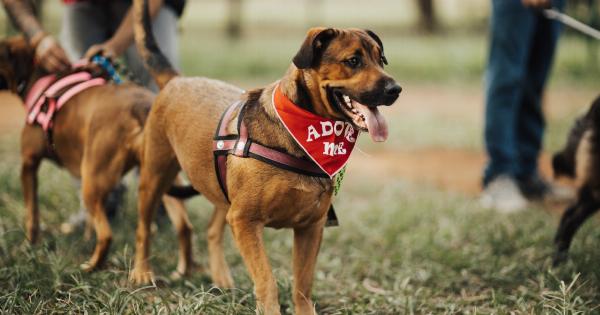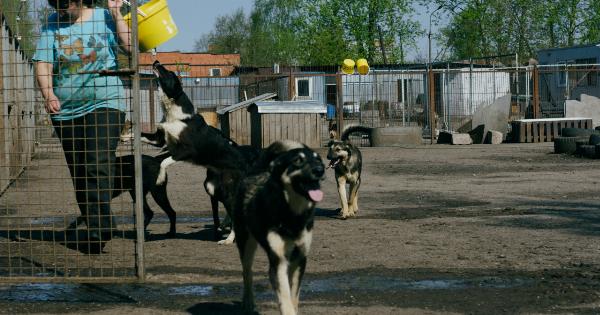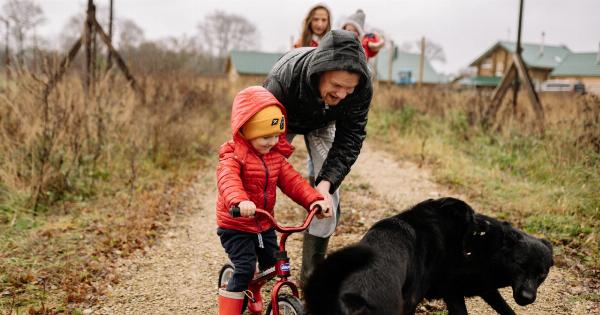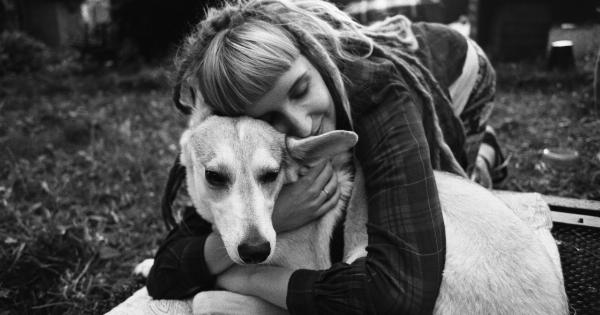Dogs have been our faithful companions for thousands of years, and communication between humans and dogs has evolved to a level where we can understand each other to a great extent.
However, there are times when our furry friends exhibit dominant behavior that can be challenging for us to comprehend.
What Does Dominance in Dogs Mean?
Dominance is a characteristic that exists in most animal societies, including dogs. In the canine world, dominant behavior is a way for dogs to establish their place in the social hierarchy.
Dominance can manifest in various forms, such as growling, snapping, guarding possessions or territory, and even challenging their human family members.
Signs of Dominance in Dogs
Dogs communicate primarily through body language, allowing them to express their emotions and intentions. Recognizing the signs of dominance in your dog can help you understand their behavior better. Here are some common signs:.
1. Stiff Body Language
When a dog stands tall with rigid body language, it can indicate dominance. Their body appears tense, and their tail may be held high or straight, showcasing their confidence.
2. Direct Eye Contact
Dogs use eye contact to establish dominance or challenge others. Direct, intense gaze can be a sign of asserting dominance.
3. Growling or Snapping
When dogs growl or snap, it is a clear display of dominance as they try to control or intimidate others around them.
4. Body Blocking
A dominant dog may attempt to block or control access to certain areas, such as doorways, paths, or favorite spots in the house or yard.
5. Possessiveness
Dominance can also manifest as possessiveness over toys, food, or even the attention of their human family members. Growling, guarding behavior, or resource guarding are clear signs of this dominance.
How to Respond to Your Dominant Dog
While dealing with a dominant dog can be challenging, it is essential to respond appropriately to ensure a harmonious relationship. Here are some effective strategies to manage a dominant dog:.
1. Establish Yourself as the Leader
Dogs need strong leadership to feel secure and content. Establish yourself as the leader by setting consistent rules, boundaries, and routines. This will help your dog understand their place in the family hierarchy.
2. Maintain Calm and Assertive Energy
When interacting with your dominant dog, it is crucial to remain calm and assertive. Dogs pick up on our energy, and a nervous or anxious demeanor can inadvertently reinforce their dominant behavior. Show your dog that you are confident and in control.
3. Consistency is Key
Consistency is vital when dealing with a dominant dog. Inconsistency can confuse your dog and undermine your position as the leader. Be consistent in enforcing rules, providing positive reinforcement, and not rewarding undesired behaviors.
4. Positive Reinforcement Training
Positive reinforcement training is a highly effective method for managing any dog, including dominant ones. Reward your dog for exhibiting desired behaviors, such as following commands or showing calmness.
This helps them understand that good behavior comes with rewards.
5. Seek Professional Guidance
If you find it challenging to handle your dominant dog’s behavior on your own, do not hesitate to seek professional help.
Professional dog trainers or animal behaviorists can provide valuable insights and guidance tailored to your specific situation.
6. Exercise and Mental Stimulation
A tired dog is often a well-behaved dog. Regular exercise and mental stimulation are crucial for managing dominant behavior.
Engage your dog in activities that challenge their mind and provide physical exercise, such as puzzle toys, obedience training, or interactive play sessions.
7. Avoid Physical or Harsh Punishment
Physical punishment or harsh corrections can escalate the dominance behavior and cause fear or aggression in your dog. Instead, focus on positive reinforcement and redirection techniques to guide their behavior in a more desirable direction.
8. Gradual Exposure to Challenging Situations
If your dog displays dominance in specific situations, such as meeting new people or encountering other dogs, consider gradual exposure and desensitization.
Slowly introduce your dog to these situations, rewarding them for calm behavior and providing a positive experience.
9. Provide Structure and Routine
Creating a structured environment with a consistent routine can help a dominant dog feel more secure and less inclined to assert their dominance. Dogs thrive with predictable patterns and knowing what to expect.
10. Neutering or Spaying
In some cases, neutering or spaying a dog can help reduce dominant behavior, especially when it is driven by hormonal factors. Consult with your veterinarian to determine if this is a suitable option for your dog.
Conclusion
Understanding and responding appropriately to your dominant dog’s communication is crucial for fostering a balanced and harmonious relationship.
By recognizing the signs of dominance and implementing effective management strategies, you can guide your dog towards more acceptable behaviors and strengthen your bond with them.


























